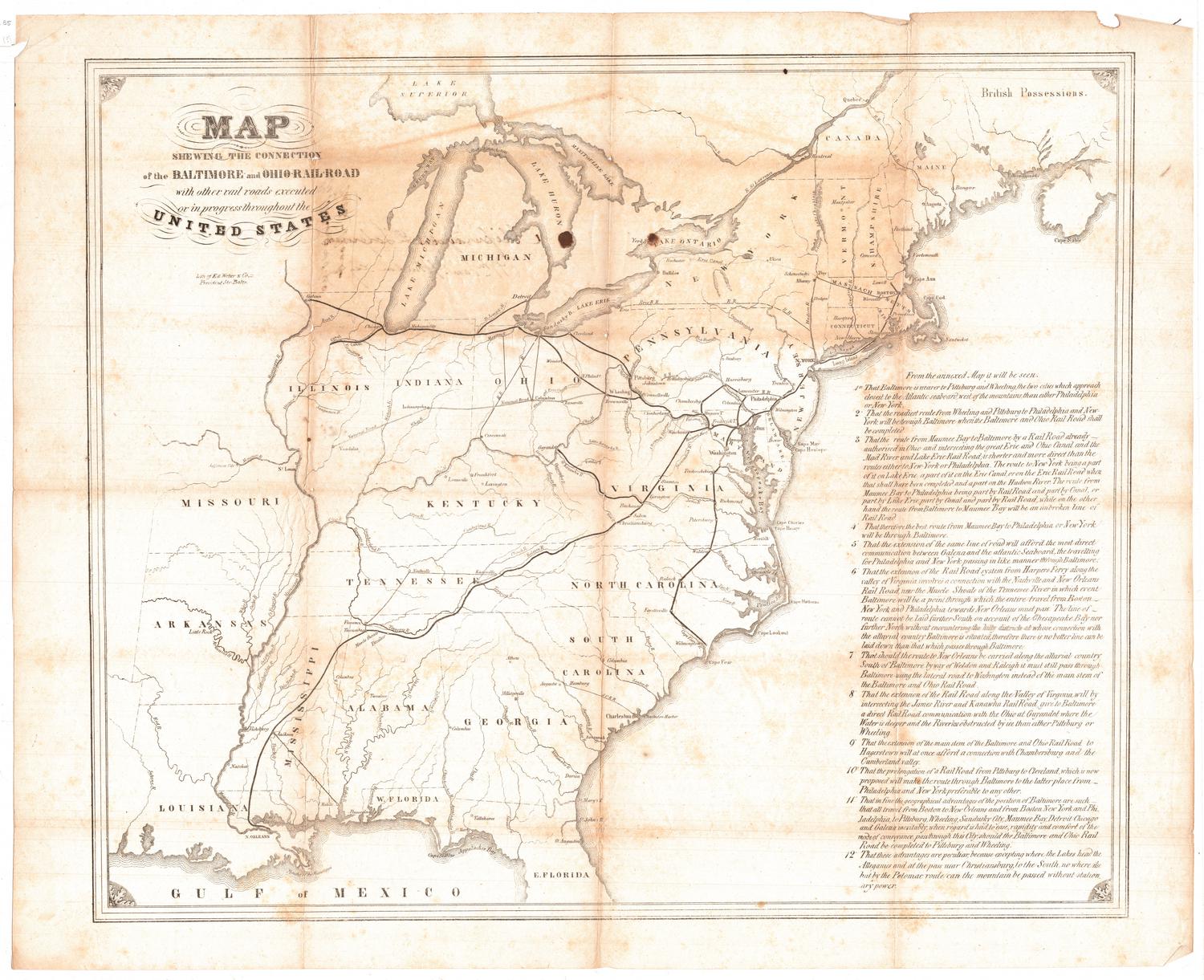Map of the Shore Line Rail Road route Between New York and Boston, showing it's Rail Road and Steamboat Connection with New York, New Haven, New London, Stonington, Providence, Newport and Boston
PrintmakerEngraved by
H. F. Walling's Map Establishment
(American, founded 1856)
PrinterPrinted by
H. F. Walling's Map Establishment
(American, founded 1856)
PublisherPublished by
H. F. Walling's Map Establishment
(American, founded 1856)
Date1860
MediumLithography; black printer's ink and watercolor on wove paper mounted on fabric
DimensionsPrimary Dimensions (image height x width): 28 3/4 x 34 3/4in. (73 x 88.3cm)
Sheet (height x width): 31 x 38in. (78.7 x 96.5cm)
ClassificationsGraphics
Credit LineConnecticut Museum of Culture and History collection
Object number2012.312.287
DescriptionDetailed map of southern New England states, including Connecticut, Rhode Island, and Massachusetts, wtih part of New York. Drainage, cities and towns, state boundaries, township lines, the railroad network, and steamboat connections are indicated. Elevation is not indicated.
Label TextThe Shore Line Rail Road began running through trains from New York to Boston on December 12, 1859, so it was still a new service when this map was published in 1860. Ferries tranported the railroad cars across the Connecticut River at Old Saybrook and across the Thames River at New London. The text on this map extols the advantages of the shore line route over existing inland routes and the proposed Airline Railroad, providing a glimpse of the stiff competition between railroad lines during the mid-nineteenth century. The chief advantages of the route appears to have been its freedom from dust due to the pleasant sea breezes along Long Island Sound, and the convenient connections to Newport, New Bedford, and Cape Cod.
NotesCartographic Note: No scaleStatus
Not on viewThayer, Bridgman & Fanning
1853









